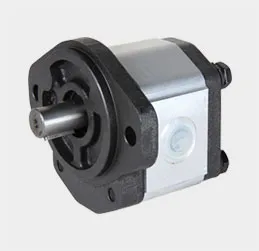High-Quality Die Casting Manufacturing Solutions for Precision Parts Production
The Rise and Importance of Die Casting Factories
Die casting has emerged as a cornerstone manufacturing process in various industries, including automotive, aerospace, and electronics. Die casting factories have played a crucial role in producing high-quality, precision-engineered metal parts. This article explores the significance of die casting factories, the processes they employ, and their influence on modern manufacturing.
Understanding Die Casting
Die casting is a metal casting process that involves forcing molten metal under high pressure into a mold cavity. Typically made of steel or iron, these molds are designed to create intricate shapes with excellent dimensional accuracy and surface finish. The most commonly used metals for die casting are aluminum, zinc, and magnesium, each chosen for its unique properties that suit different applications.
The Die Casting Process
The die casting process involves several key steps. First, the metal is heated until it becomes molten. The molten metal is then injected into a die at high speed and pressure. After the metal cools and solidifies, the die is opened to release the finished part. This rapid production cycle allows for the mass manufacturing of components, significantly reducing the time required compared to other casting methods.
There are two principal types of die casting hot chamber and cold chamber. In hot chamber die casting, the injection mechanism is immersed in molten metal, making it suitable for low-melting-point alloys like zinc. Cold chamber die casting, on the other hand, involves pouring the metal into the injection chamber from a separate furnace, which is more appropriate for higher melting point materials like aluminum.
Advantages of Die Casting
One of the primary advantages of die casting is its ability to produce highly complex geometries with excellent dimensional tolerances. This improves the performance and efficiency of the final products, making them suitable for applications where precision is paramount. Additionally, die casting allows for thin walls and intricate details, reducing the amount of material waste and contributing to cost savings.
die casting factory

Another significant advantage is the speed of production. Once the die is constructed, mass production can occur rapidly, making die casting an ideal choice for high-volume projects. Moreover, die-cast parts often require little to no machining, further speeding up the manufacturing process.
Environmental Impact and Sustainability
As industries become increasingly concerned about sustainability, die casting factories have adapted by implementing eco-friendly practices. Many manufacturers are now focusing on energy efficiency and reducing waste during production. For instance, advancements in die casting technology have led to the development of more efficient furnaces and recycling systems that reclaim metal scrap.
Additionally, the choice of materials plays a crucial role in sustainability. Aluminum, one of the most commonly die-cast metals, is highly recyclable. This attribute allows die casting factories to contribute to a circular economy by reusing materials and minimizing the environmental footprint.
The Future of Die Casting
The future of die casting factories looks promising. With the rise of advancements in automation and robotics, manufacturers can improve production efficiency, reduce labor costs, and enhance quality control. Precision engineering combined with advanced technology, such as 3D printing and simulation software, will drive innovation in die casting processes. These advancements not only increase efficiency but also allow for rapid prototyping and the production of customized designs.
Furthermore, as industries strive for lighter and more efficient products, die casting is expected to grow in importance. The automotive industry, for example, is moving toward lighter electric vehicles, making die casting an essential method for producing lightweight, high-strength components.
Conclusion
Die casting factories are integral to meeting the demands of modern manufacturing. Their ability to produce complex, high-quality parts at scale sets them apart as a preferred method for various industries. As technology continues to evolve and the focus on sustainability intensifies, die casting factories will remain pivotal in shaping the future of manufacturing. With their contribution to efficiency and innovation, die casting will undoubtedly play a significant role in driving economic growth and meeting the challenges of the 21st century.
-
Drill For Confined Spaces - Baoding Hairun Machinery And Equipment Trading Co., Ltd.NewsAug.15,2025
-
Advanced Crawler Drilling Rig - Baoding Hairun Machinery | Underground Mining SolutionsNewsAug.14,2025
-
OEM Sand Cast Pump Valve Fittings - Baoding Hairun Machinery And Equipment Trading Co., Ltd.NewsAug.14,2025
-
OEM Sand Cast Pump Valve Fittings - Baoding Hairun | Customizable Fluid Control & Industrial Casting SolutionsNewsAug.14,2025
-
OEM Sand Cast Pump Valve Fittings - Baoding Hairun Machinery And Equipment Trading Co., Ltd.|Precision Engineering, CustomizationNewsAug.14,2025
-
Precision Pressure Casting | Aluminum & Vacuum Die Casting ProductsNewsAug.14,2025















